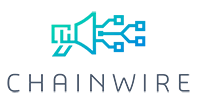Seeking Alpha
 2023-03-03 02:00:41
2023-03-03 02:00:41
Summary Tyler Winklevoss has previously stated Ethereum should be worth as much as digital gold. Cathie Wood is even more bullish, predicting Ethereum to reach a market cap of $20 trillion. I attempt to make a more realistic valuation of ETH. Thesis Summary In a 2020 interview with Casey Adams, Tyler Winklevoss talked about the future of Ethereum ( ETH-USD ) and its applications. Taking his arguments to their logical conclusion, he seems to imply ETH could be worth close to $80,000. More recently, Cathie Wood said ETH could reach a market cap of $20 trillion by 2030. However, I believe both of their assessments are too optimistic. Ultimately, putting a long-term price tag on something like Ethereum is a speculative endeavour, but it will help us understand where its value comes from and how we can benefit from it. Winklevoss Vs. Wood Tyler Winklevoss gave an interview a while back focusing on Bitcoin ( BTC-USD ) and Ethereum. The CEO of Gemini talked about the applications of Ethereum and ended by saying it could be worth as much as digital gold, if not more. In the first part of this interview, he had some great insights, but I do not agree with comparing ETH to digital gold. Winklevoss compared Ethereum to Facebook, now Meta ( META ) back in its early days. Facebook was a revolutionary social media website, but it also became a platform on which other companies could build their own companies. A prime example of this was Zynga, which eventually IPO’d in 2011 and was bought out for $12.7 billion last year. Ethereum can also be thought of as a decentralized AWS since it allows anyone to create and host their applications on the Ethereum blockchain. This is all true and can help us reach a valuation for ETH. However, Winklevoss ends the interview by saying that Ethereum could be worth as much, if not more, than digital gold. Gold has a market capitalization of roughly $10 trillion, while at today’s price of $1650, Ethereum’s market cap stands at around $200 billion. Assuming ETH’s supply doesn’t change, though most estimates suggest ETH should remain deflationary after the merge, this would mean each ETH would have to be worth 50x more than its current price, giving us a price target of $80,000. More recently, Cathie Wood predicted that the market cap of Ethereum could reach $20 trillion : As financial services move on-chain, decentralized networks are likely to take share from existing financial intermediaries, the report said. Ark Invest predicts Ether will be a primary beneficiary of this shift. Source: Markets Insider At a $20 trillion market cap, Ethereum would be worth twice what Tyler Winklevoss predicted, somewhere around $160,0000. While I am bullish on Ethereum, I think both assessments are too optimistic. Disputing Cathie and Tyler In Tyler Winklevoss’s defence, this is an off-the-cuff comment, which, more than trying to give a price target for ETH, is intended to portray that he believes ETH should be worth more than Bitcoin, the actual digital gold. While, indeed, ETH has significantly more potential and applications than Bitcoin, we can’t just compare its market cap to that of gold and call it a day. The Gemini CEO was on the right track when comparing Ethereum to Facebook, so let’s expand on this. If we imagine Ethereum as a company, what could its potential revenues be? Software Revenue Forecast (Statista) The chart above, provided by Statista , shows a forecast for worldwide revenues in the Software industry. In 2023, software revenues are expected to grow to $650 billion, and by 2027, this figure could be $812 billion, implying a CAGR of 5.72%. Just to round things out, if we assume a similar growth rate, then by 2031, worldwide software revenues could be around $1 trillion. Now, the next question we should answer is, how much of the software industry will be “hosted” on Ethereum by 2031? Let’s be very optimistic and say that 50% of the market is on Ethereum. We now have a “company” with $500 billion in revenues. We can then apply an average software industry P/S of around 10, giving us a potential valuation of $5 trillion. Making the same assumptions as before, we obviously get a target price of half of our previous estimates, $40,000. Now, this is a more realistic price target but still probably too high. It’s very unlikely that ETH will take over 50% of the software market in 10 years. More likely, we’d be looking at a tenth of that. However, ETH is also not a traditional company, and if indeed it manages to capture 5% of business in the industry, then its valuation, in terms of P/S should be much higher. Moving on to the ARK thesis this is based on the idea that Ethereum can take a big chunk of the financial sector market cap. According to ResearchandMarkets , the financial services market could be worth $45 trillion by 2031. Financial services forecast (researchandmarkets) Therefore it would appear that ARK Invest predicts that ETH could take almost 50% of the market cap of this segment. This seems very optimistic even 8 years from now. Ethereum will face a lot of challenges on its way to gaining such market cap, most of all regulatory and competition-wise. Unlike the software industry, financial services are highly regulated. Even when financial players do move on-chain, a lot of them will want to do so on their own terms, not through a blockchain that, in principle, is decentralized. I believe a more realistic market share would be closer to 10%, at most, giving us a market cap of $4.5 trillion and a price of $36,000 for Ethereum by 2030. Final Considerations Cryptocurrencies like Ethereum and Bitcoin, like companies, must be valued for what they can be. Bitcoin can be considered digital gold, but Ethereum is more like digital oil. If the Ethereum blockchain becomes the home of the next generation of software companies and financial services , then ETH will literally be the gas that fuels this ecosystem. With that said, Ethereum doesn’t stand on its own. In order to function properly, by which I mean quickly and cheaply, it will have to rely on many Layer 2 solutions such as Polygon ( MATIC-USD ) or Optimism ( OP-USD ). These altcoins have a lot more potential for growth and appreciation, and I cover them regularly in my marketplace.
Bitcoin (BTC) $91,968.52 4.87%
{
Ethereum (ETH) $2,289.05 4.71%
Tether (USDT) $1.00 -0.01%
{
 Solana (SOL) 148.644431 2.53%
Solana (SOL) 148.644431 2.53%Cardano (ADA) $0.97 -0.67%
{
Chainlink (LINK) $17.23 14.42%
{
 Litecoin (LTC) $106.69 1.48%
{
Litecoin (LTC) $106.69 1.48%
{
 Helium (HNT) 3.420941 12.89%
{
Helium (HNT) 3.420941 12.89%
{
 Polygon (MATIC) 0.25693 2.45%
{
Polygon (MATIC) 0.25693 2.45%
{
Dash (DASH) $24.95 2.72%
{
 X-CASH (XCASH) 3.0E-6 5.48%
{
X-CASH (XCASH) 3.0E-6 5.48%
{
Dogecoin (DOGE) $0.00 0.77%







